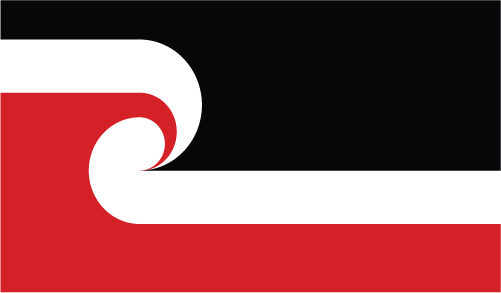- Home
- News and media
- Media releases
- Electricity Lines Businesses: Commission releases first of two draft decision papers
Electricity Lines Businesses: Commission releases first of two draft decision papers
Published23 Dec 2002
The Commerce Commission today released the first of two draft decision
documents relating to its development of a targeted control regime for
electricity lines businesses. This work is required under Part 4A of
the Commerce Act.
The paper sets out the Commission's draft decision on the thresholds for
assessing the performance of the lines businesses. As part of the
design of the threshold regime, the paper also includes the Commission's
draft decision from its review of asset valuation methodologies. This
is an interim paper with a second paper to be released around the end of
January 2003.
The paper is available from: www.comcom.govt.nz
With respect to thresholds, the Commission's draft decision is to set
three thresholds, to apply from 1 April 2003 to 31 March 2008 (1 July to
30 June in the case of Transpower), specifically:
* a price path threshold, against which each lines
business will be assessed annually;
* a quality threshold, against which each lines business
will be assessed annually; and
* a profit threshold, against which each lines business
will be assessed at the end of the period, i.e. in five years time.
Having considered submissions to date from interested parties, the
Commission's draft decision is that this package of thresholds best
serves the purpose of the targeted control regime.
To ensure the purpose of the price path threshold is not defeated by
lines businesses increasing prices prior to its commencement, the
Commission intends to assess, as soon as possible after 30 June 2003,
lines companies against an initial threshold. The initial threshold for
each lines business will be that their prices as at 30 June 2003 are no
higher, in nominal terms, than they were when Part 4A was enacted (8
August 2001).
If a lines business breaches one or more of the thresholds, the
Commission may investigate that business and, if necessary, control its
prices, revenues or quality standards.
The profit threshold requires the system fixed assets of lines
businesses to be valued. In this regard, the Commission's draft
decision is:
* the regulatory objectives of Part 4A can be achieved
using either replacement cost or historic cost valuation methods going
forward and, therefore, lines businesses may choose to use Optimised
Deprival Valuation (ODV) or Historic Cost (HC), provided the chosen
method is applied consistently over time and profits are measured in
accordance with that method;
* for this approach to work, the opening valuation must be
calculated on the same basis for all lines businesses; and
* the opening valuation should be based on the ODV audited
and approved by the Commission earlier this year as part of the
recalibration audit. For lines businesses that choose HC going forward,
this ODV would be deemed to be the opening HC value.
The Commission's draft decision on asset valuation takes into account
the industry-specific considerations of the electricity lines sector and
the purpose of the regime the Commission is required to develop.
Previously, the Commission indicated final decisions on the thresholds
and the outcomes of the review of asset valuation methodologies would be
taken at this time with further consultation limited to the
implementation detail. Instead, the Commission has now decided to
provide further opportunity for interested parties to comment on the
draft decisions.
Comments from interested parties will be sought after the Commission
releases its second paper around the end of January 2003. This second
paper will focus on implementation issues flowing from the draft
decisions announced today. A conference will also be held in early
March for interested parties to present their views.
Media contact: Peter Alsop, Manager, Network Performance Group
(04) 924 3676, mobile 025 725 767
Jackie Maitland, Communications Manager
(04) 924 3708, mobile 029 924 3708
Background
Targeted control regime
Part 4A of the Commerce Act 1986, which commenced on 8 August 2001,
establishes the regulatory regime for large electricity lines business.
The Commission released a Discussion Paper on 21 March 2002 and held a
public conference for interested parties to make their views known in
mid-July 2002. The Commission is required, inter alia, to set
thresholds and assess the performance of lines businesses against those
thresholds. Those businesses that breach the thresholds could then be
investigated by the Commission to determine whether they should be
placed under control. The Commission can control any component of
prices, revenues or quality standards.
Review of asset valuation methodologies
Part 4A of the Commerce Act requires the Commission to carry out a
review of asset valuation methodologies for electricity lines businesses
as soon as practicable. The Commission released an Issues Paper on 14
March 2002, a Discussion Paper on 1 October 2002, and held a public
conference for interested parties to make their views known from 25-28
November 2002.
Recalibration audit
Part 4A of the Commerce Act required the Commission to carry out a
comprehensive audit of the valuation of the line business system fixed
assets of large electricity line owners. The aim of the comprehensive
audit was to ensure valuations reflected a rigorous and accurate
application of the ODV method, as set out in the fourth edition of the
ODV Handbook. Part 4A required lines companies to publicly disclose, by
31 March 2002, a valuation report approved by the Commission. The
Commission's process for the audit was set out in its Asset
Recalibration Document released on 28 September 2001.
Relevant media releases include:
* 2002/22 - Commission to review electricity lines
valuation methodologies: Issues Paper attached (14 March 2002)
* 2002/25 - Commerce Commission releases discussion paper
on control of electricity lines businesses (21 March 2002)
* 2002/31 - Commerce Commission approves the asset
valuations of 28 electricity lines companies (4 April 2002)
* 2002/45 - Update: Regulation of electricity lines
businesses (2 October 2002)
